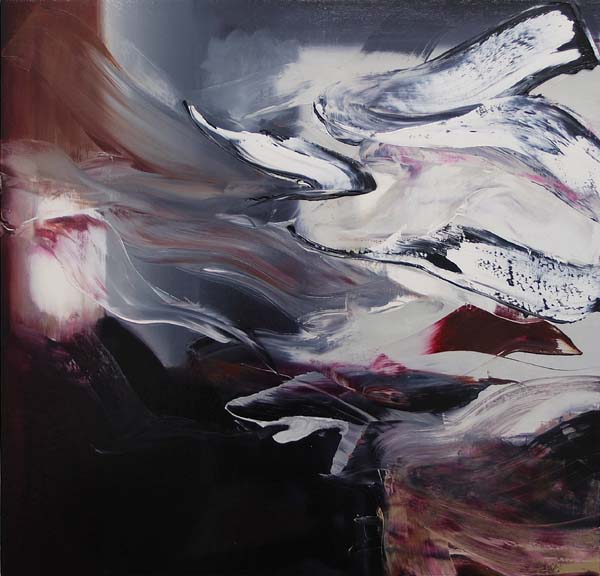The American painter has resorted to a prodigious ascension towards the dialectic synthesis of his oeuvre. Naturalistic realism and abstract expressionism are conjugated with a rich palette of stylistic and compositional elements in a period of creative maturity which is set to make waves.
During this past snowy February we had the opportunity to attend “Summer Table Paintings”, Maxwell Stevens’ latest exhibition at Onetwentyeight Gallery, the longest running gallery of the Lower East Side of Manhattan. Kazuko Miyamoto (gallery owner and director) has curated works that span a decade to build an exhibition that not only shows the best paintings of Maxwell Stevens but represents the author’s process, letting us see through Maxwell Stevens in three different ways. It opens the domestic spaces of the artist, an intimate reconstruction of his life through his paintings; it reveals his creative process with studies and collages where the first patchworks and early compositions are rendered; and it let us appreciate this past decade touching on the milestones of his creation.
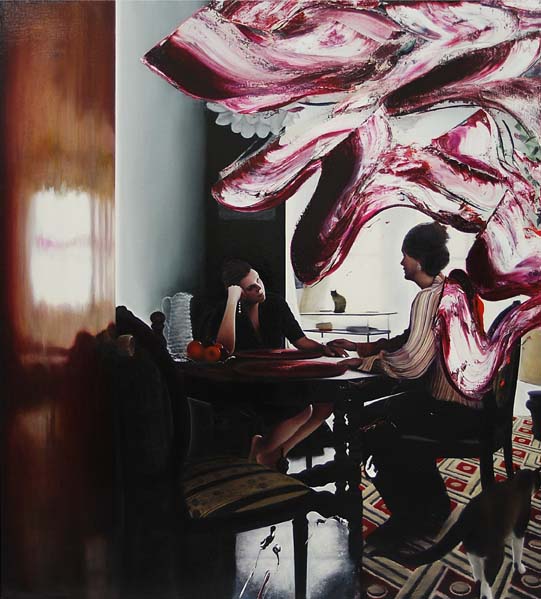
Maxwell Stevens “Summer Table (Sisters)” 2013. Oil on linen, 72 x 65 in / 183 x 165 cm. Courtesy the artist and onetwentyeight, New York
This new period is marked by the imposition of large abstract gestures on top of realist paintings. These vivid gestures of thick impasto grow invariably in an upwards motion as abrupt expressions that reach the viewer with immediate emotional charge and the space far beyond the canvas. While the realist painting lies complete on beneath much subtler in emotional charge and tenuous hue, within a marked chiaroscuro where the degree of detail emphasizes what’s central to what’s merely peripheral. A theme of companionship can be tracked throughout, but it’s not the customary presence of the other as a reminder of the self, as an objective device to look at the own inner subjective experience denying egoistic solipsisms; it’s the presence of the other in support and consolation, the seeking of others because they need each other.
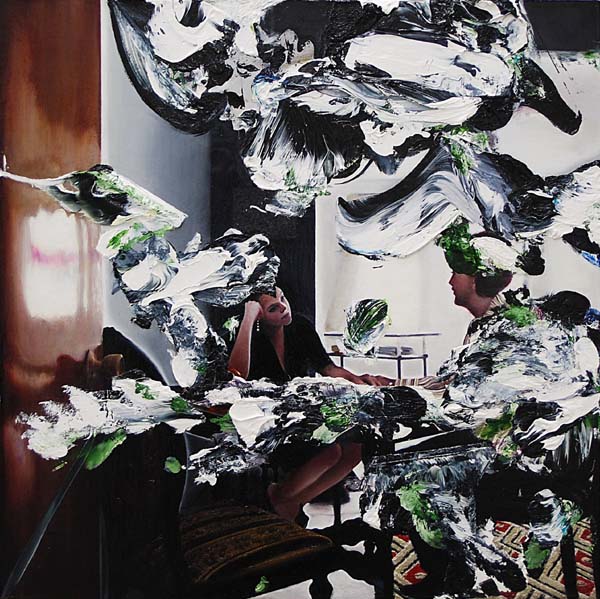
Maxwell Stevens “Summer Table 2” 2013. Oil on linen, 20 x 20 in / 51 x 51 cm. Courtesy the artist and onetwentyeight, New York
Maxwell Stevens comes from a long professional journey as a painter. Born in Charleston, South Carolina received an MFA in Painting from the School of Art at Washington University in Saint Louis and a BFA in Painting from The Atlanta College of Art. His paintings and drawings have been exhibited internationally alongside contemporary artists such as Sol LeWitt, Cy Twombly and Joseph Beuys, from Tokyo to Dallas to New York.
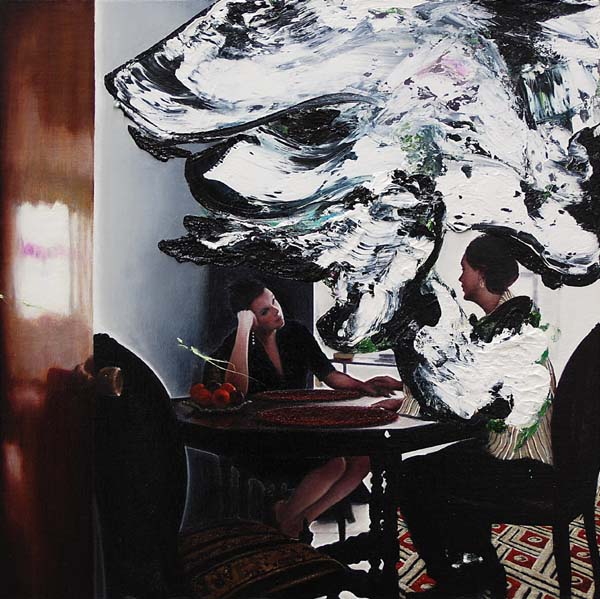
Maxwell Stevens “Summer Table 3” 2013. Oil on linen, 20 x 20 in / 51 x 51 cm. Courtesy the artist and onetwentyeight, New York
Realism took most of his first period covering the challenges and intricacies of illusory perceptions, making the two dimensions feel like more and so on, but he was simmering a dissatisfaction that broke into a 12 years period of straight non representational abstract painting. He was missing that inner feeling of release and volcanic emotional outburst that only abstract expressionism allows. In Maxwell’s own words: “It’s like music. There is a beauty to pure abstraction because it doesn’t have to represent the things of this world. There is a virtue to that”. Just like German idealism produced the Strum und Drang (Storm and Urge) movement where edgy waves and curly clouds were set to express the noumenal beyond this world; Maxwell’s contemporary stance produces comparable contrapositions between realistic figures and tumultuous abstractions. The representational had to be present and it finally returned to his paintings thanks to a reconciliation with the power of the figure in admiring Rembrandt, Caravaggio, and Velázquez. Despite being an “illusion painted”, the contraposition of the abstract -a natural signal real in itself and somehow out of this world- against the representational artificial sign which meaning is other than itself, creates such a captivating tension and complicity that Maxwell Stevens has been searching for it for the last ten years.
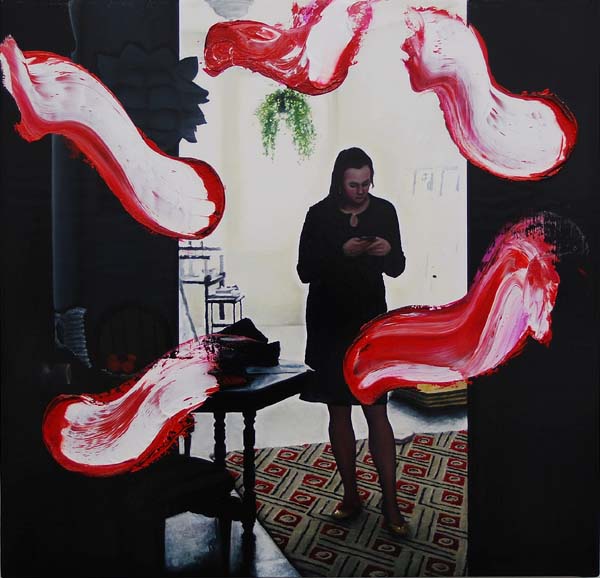
Maxwell Stevens “Sunroom 2” 2015. Oil on canvas, 26 x 27 in / 66 x 68.5 cm. Courtesy the artist and onetwentyeight, New York
His initial intention was adding every day aspects to his abstract paintings, without making a blending or resorting to the surreal, so he tentatively painted soft focused complete scenes, then overpainted with the abstract language that he had been developing for twelve years. The exhibition at Onetwentyeight Gallery clearly showed how the degree of detail and the focus of his scenes was increasing over time until we arrive at his Summer Table series.
This large painting (72”x65”) minutely depicts a domestic scene. The sisters are captured at a moment of consolation, when connecting through a light touch of the hand and a deep glance to the eyes. It’s an intimate moment witnessed from the perspective of a six years old at the dining room’s door. The eastern summer morning light profiles both figures lending a contrasted chiaroscuro to the room and emphasizing a most significant gesture of burdensome resignation.
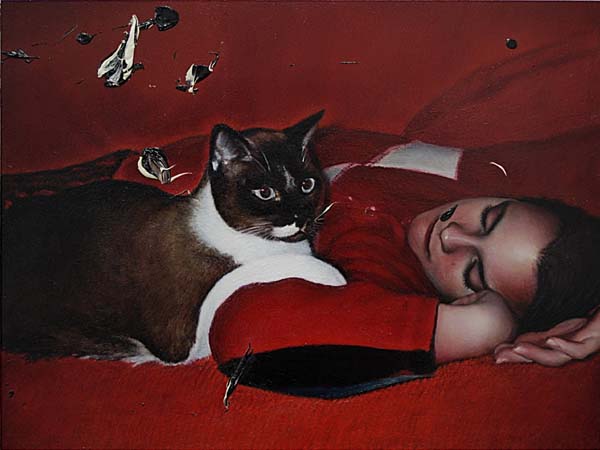
Maxwell Stevens “Evening” 2014. Oil on wood, 12 x 16 in / 30.5 x 41 cm. Courtesy the artist and onetwentyeight, New York
From head to head, the central figures delineate a long feminine “u” along the arms in their blouses to the hands at the bottom, while in the middle and back at a distance a Siamese cat mutely stands. This quiet and delicately rendered scene is forced upwardly from the back of the care giving sister in ample knifestrokes of white and red magenta. It’s a full-fledged intrusion committed vigorously all over the walls and ceiling, and in fact, purposely committed over the third dimension: making at once the mediate immediate. And then, with gracious irony, and just once, he filters the realm of the abstract back into the tridimensional scene by bringing the hovering magenta to a tiny reflection on the lacquered door that give us entry to the whole scene.
Maxwell Stevens has developed a highly refined style at the conceptual and plastic levels. We’ll definitively keep our eyes on him and will patiently visit his Long Island City studio for his next paintings to come.
By Manuel Rodríguez
NY Arts







